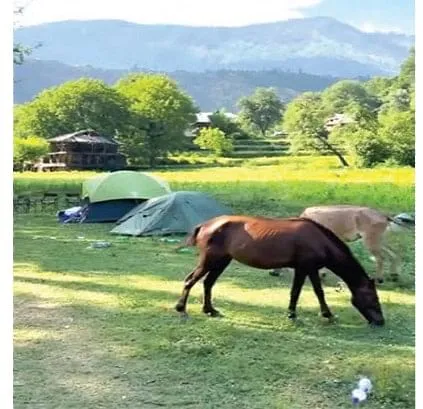Srinagar, Jul 10: Horses, mules, and ponies, the ‘joyrides’ for tourists in Kashmir, used to be a major means of transport in rural areas and in many parts of urban Kashmir, but now are mostly used for joyrides and traversing treacherous terrains and as props for vacation photos.
However, when the tourists leave, the animals will be discarded as junk, left to face hunger, disease, and cruelty.
J&K is home to 26,169 equines as per the 2020 Livestock Census.
The equine population here is among the highest in India.
With 7073 horses and ponies, J&K stands second nationally in terms of horse and pony population.
With a mule population of 6162, it is at number three nationally.
There are 12,934 donkeys in J&K, the sixth highest population nationally.
However, despite the high population, these animals continue to be neglected and subjected to cruelty.
When the tourist season is over, most owners, often from economically marginalised communities, find the feed cost a burden.
Resultantly, thousands of equines find themselves on roads and open fields.
Their lives are at risk from traffic, stray dogs, cruelty inflicted by humans, and harsh weather.
Social media platforms remain flooded with evidence, with videos showing emaciated horses with plastic strings tied around their mouths, ridden recklessly by children, or hobbled around with bound legs.
Many are beaten with sticks, attacked with axes, and set on fire when they are found grazing someone’s field.
The signs of malnutrition, injuries, and disease are written in bold letters on the bodies of horses that one spots across the region.
A study published in the Asian Journal of Animal Sciences in 2011, carried out by M R Fazili and M A Kirmani, found a lack of government support for equines compared to other livestock.
As per the researchers, these animals are often owned by socially disadvantaged farmers and the animals and their welfare are often neglected.
According to animal welfare organisations, the Prevention of Cruelty to Animals Act, 1960, finds no takers in the region.
Director Animal Rescue Kashmir Dawood Muhammad said: “No system exists to track or penalise owners who abandon their horses, donkeys, and mules or those who inflict cruelty on stray animals, including equines. Sadly, government after government have only turned a blind eye towards the dismal state of equines in Kashmir, even while their numbers are so high. It is like an elephant in the room that no one sees.”
Solutions like ear-tagging or micro-chipping to trace equines to their owners, coupled with fines for neglect, have been floated.
In Uttarakhand, a 2023 court order mandated health checks and a task force for equines during the Char Dham Yatra, and this reportedly has reduced animal suffering.
J&K could also work on solutions like ear-tagging or micro-chipping to trace equines to their owners, coupled with fines for neglect; fodder subsidy or off-season shelters to prevent abandonment; and a working Society for Prevention of Cruelty to Animals across the length and breadth of the rugged terrain.
Director Animal Husbandry Kashmir, Parvinder Singh Sudan, said currently there is no such proposal with the department.








